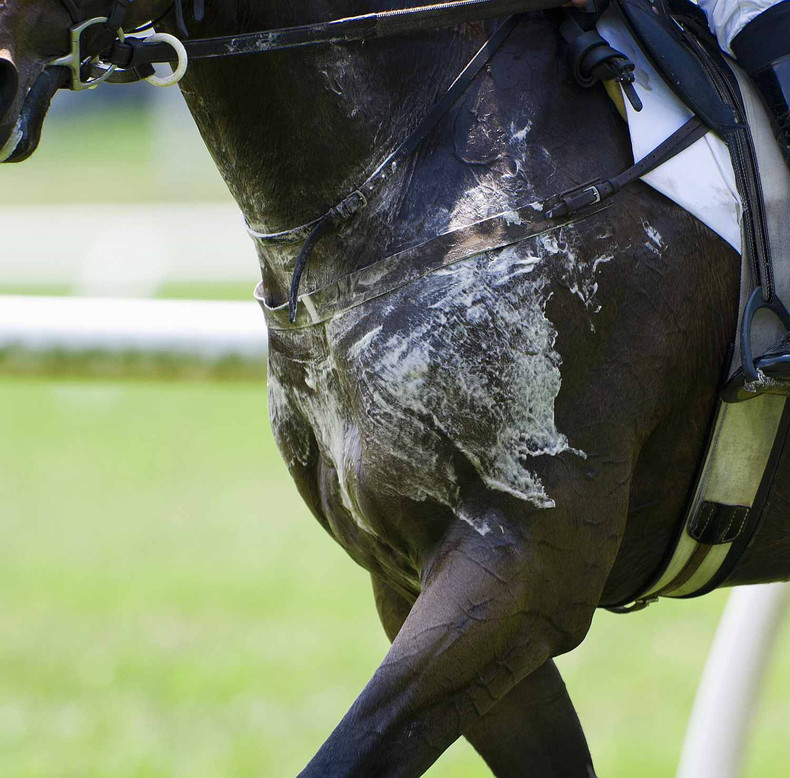What is it and how can you help prevent it happening to your horse
You have probably heard of the term Tying Up, even if you have never actually had an experience with the condition. It is a good idea to know a little bit about it and how you can help your horse if it does suffer from the condition one day. It presents like muscle cramps during or post exercise and depending on the severity of the episode, it can be extremely painful and lead to a resistance to walk. Its proper name is Rhabdomyolysis and results from muscle damage/breakdown during or after exercise.
There is no definitive reason why some horses are more predisposed to the condition than others but there are many things that can contribute to an episode such as.
- Excessive Vitamin and fluid loss normally through sweat during intense exercise
- Days off work and being on a high grain diet (especially oats)
- Lack of fitness for required workload
- Low selenium and Vitamin E levels
- Excess of Soluble carbohydrates
- Electrolyte Loss
- Extreme exercise
- Illness or virus
- Highly strung nervous horses on high grain diet (especially fillies)
Symptoms and diagnosis
- Painful muscle cramping, generally over the back, pelvis and hind quarter (in severe cases it can affect the shoulder muscles as well)
- Reluctance to walk
- Increased heart and respiratory rate
- Increased sweating
- Muscle tremors
- Urine dark in colour (due to excessive protein from muscle breakdown)
- Blood test to check muscle enzymes (usually done 4-6 hours after)
What to do if you think your horse is tying up
- Stop exercise immediately
- If very severe call your vet, they can assist with pain relief and fluid loss
- If you horse is tying up badly or is quite stressed do not force them to walk it can cause more damage to the muscles, if they are only mildly sore a gentle walk for a pick of grass to help cool muscles down can help.
- Rug them to keep them warm especially if it is in the cooler months
- Replace electrolytes that may have been lost – Salkavite, Electrolytes, Rehydrate or Electrolyte Paste would be perfect for this
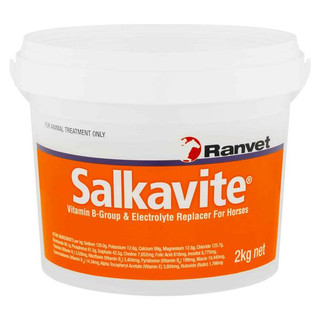
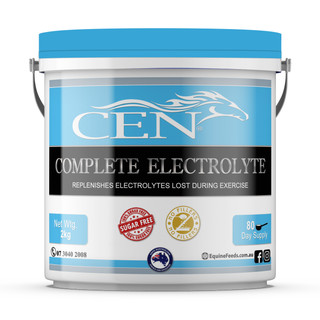
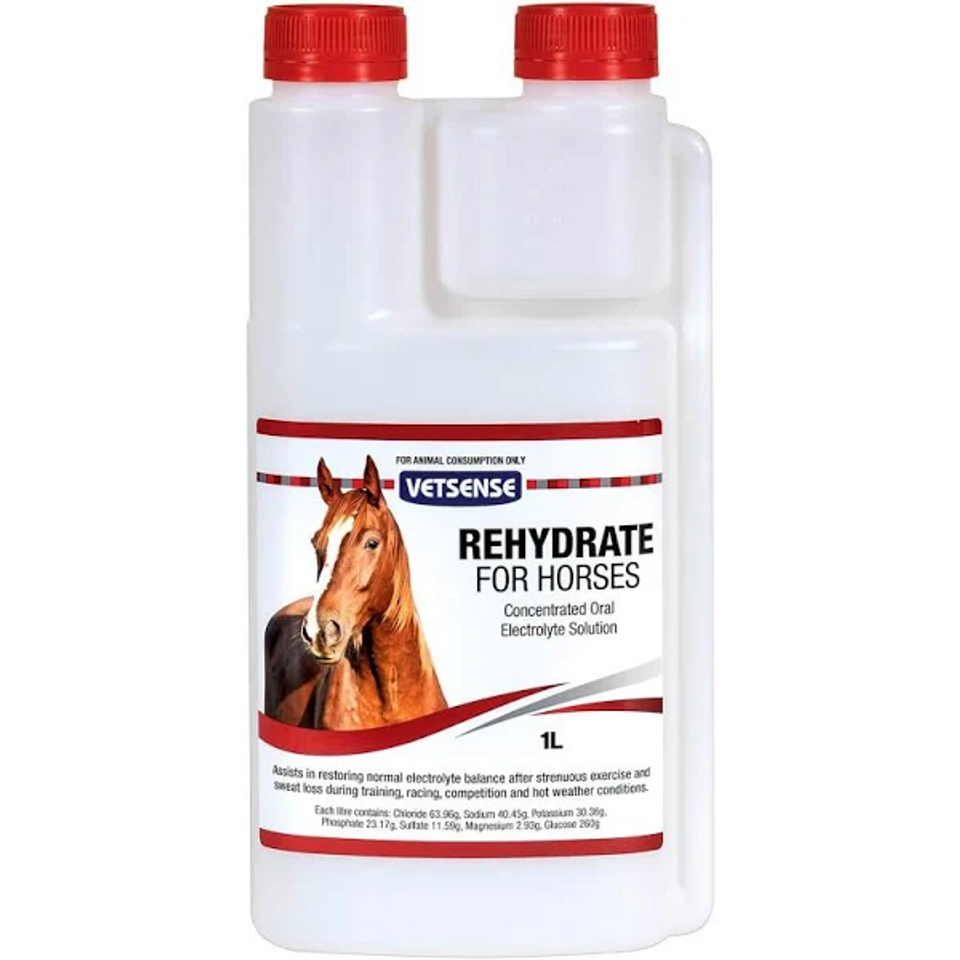
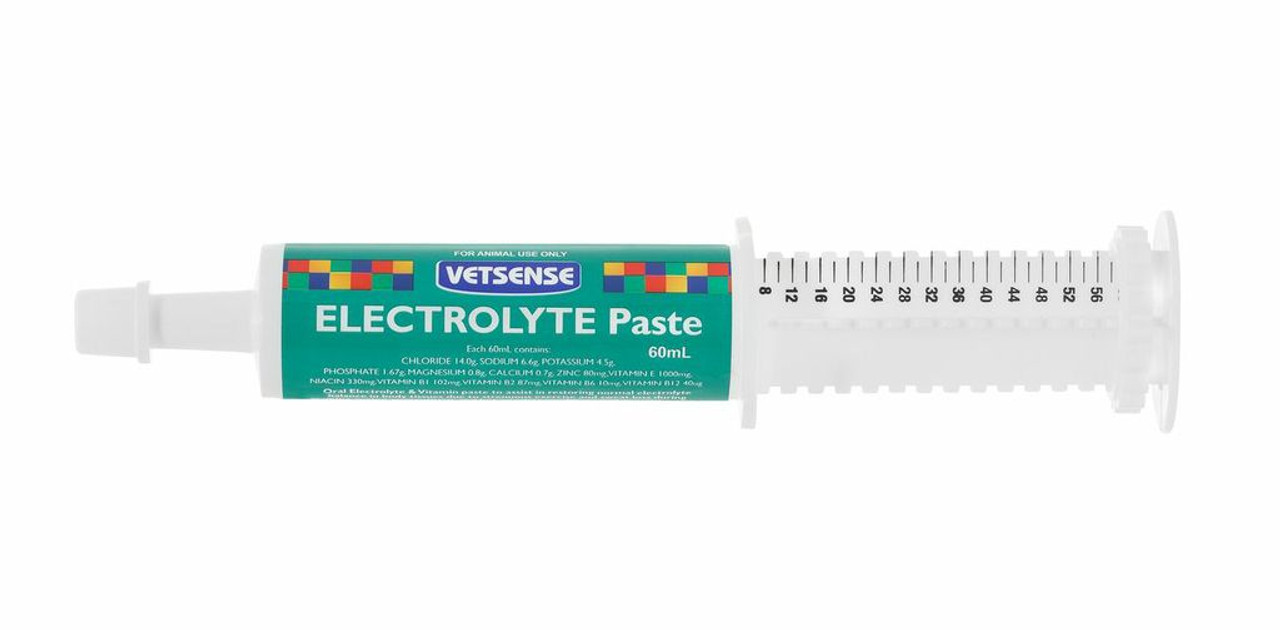
- Decrease grain levels in feed, give extra hay
- Cease intense exercise, in severe cases for at least a week to allow muscle to repair, do only nice gentle walks, light work etc
Prevention
- Access diet and nutritional levels, make any changes gradually, look at reducing grain levels in the diet (especially oats).
- Addition of an oil to your horses ration containing Omega’s such as Grand Prix oil, Energy Gold or Cen Oil which are a very good cool energy source.
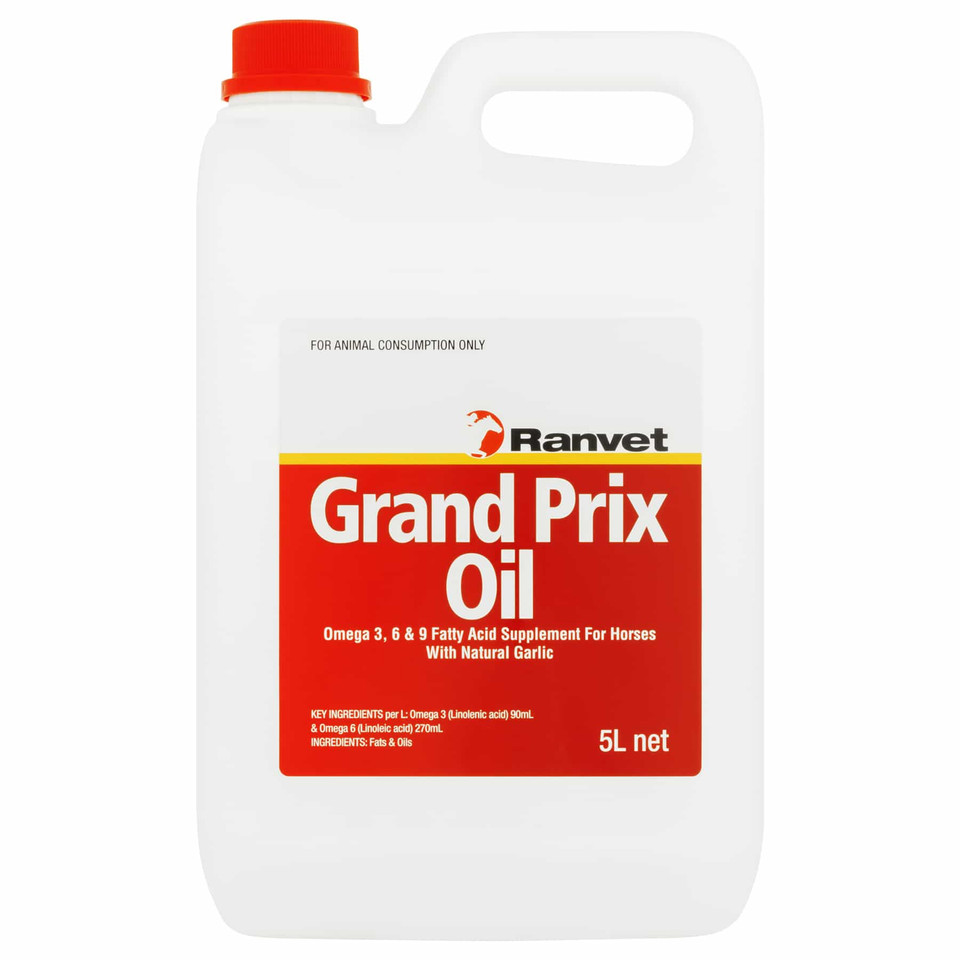
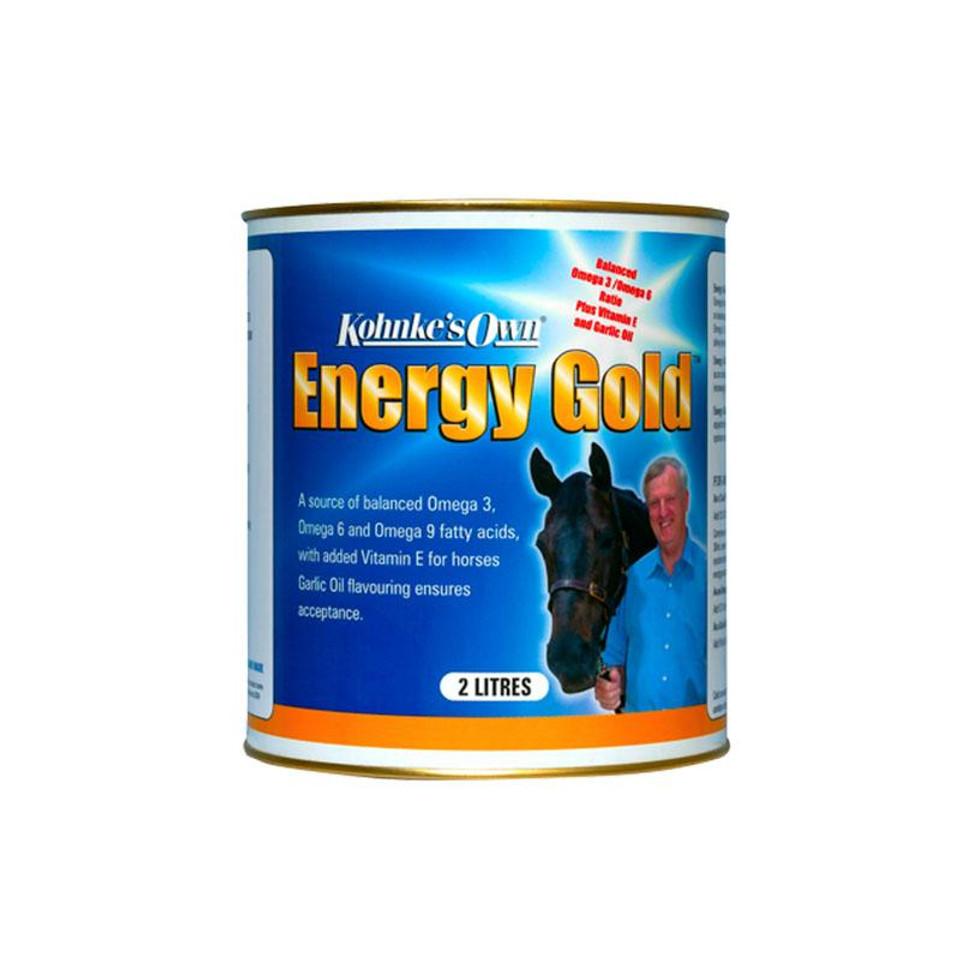

- Evaluate your exercise routine and make sure you are working your horse at the fitness level they are currently at and make any increases gradually
- Warm you horse up well before intense exercise
- No complete rest days if your horse is predisposed to tying up (eg. Introduce walks or swims to replace rest days)
- Reduce stress
- If you horse is stabled, allow access to a paddock or day yard throughout the day
- Ensure adequate fluid intake
- Addition of Electrolytes to diet such as Ranvet’s Salkavite and in more severe cases an acid Neutraliser such as Neutrolene can also be used, this adds in helping prevent lactic acid build up in the muscles.
- Add a multi vitamin, mineral supplement to your horse’s diet such as Ration Balancer, Vitamin and Minerals or Cell Vital and as mentioned previously, an electrolyte replacer to ensure your horse is getting the required amount of electrolytes in their diet, such as Sodium, Chloride, Potassium, Magnesium, that they have the correct ratio of calcium/phosphorous, and also they are getting important antioxidants such as Selenium and Vitamin E.
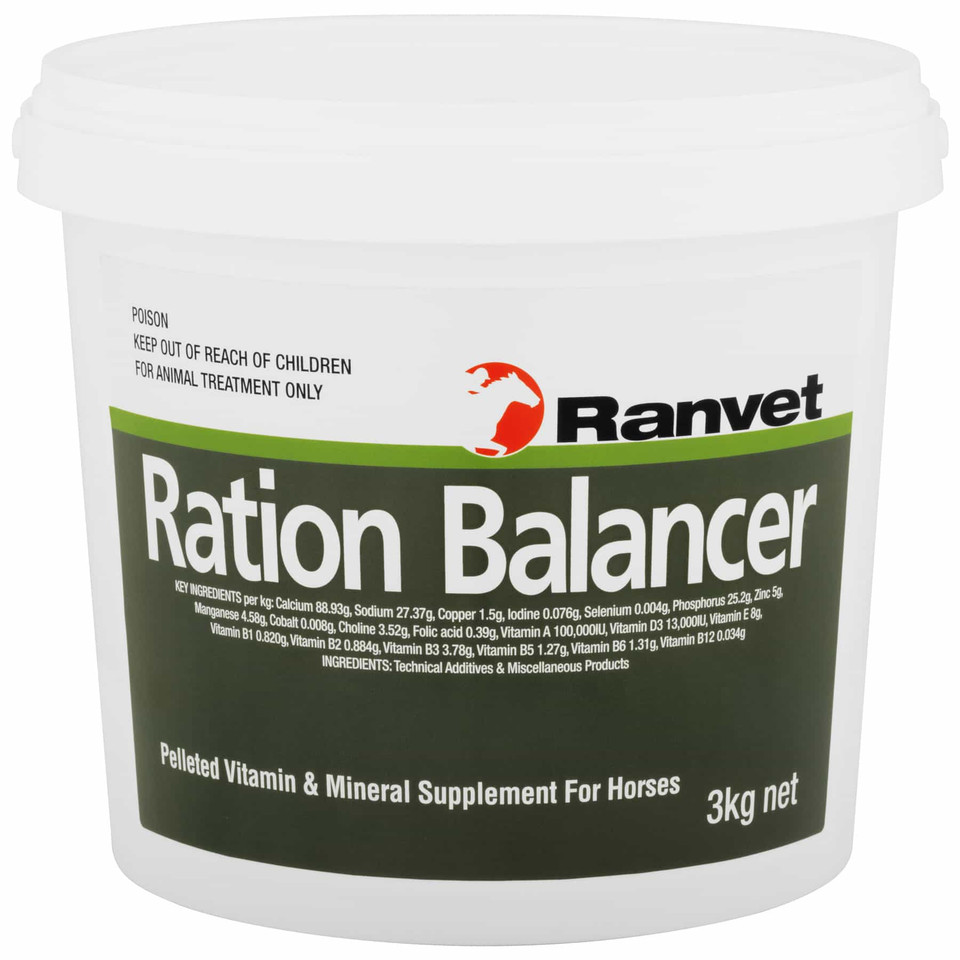
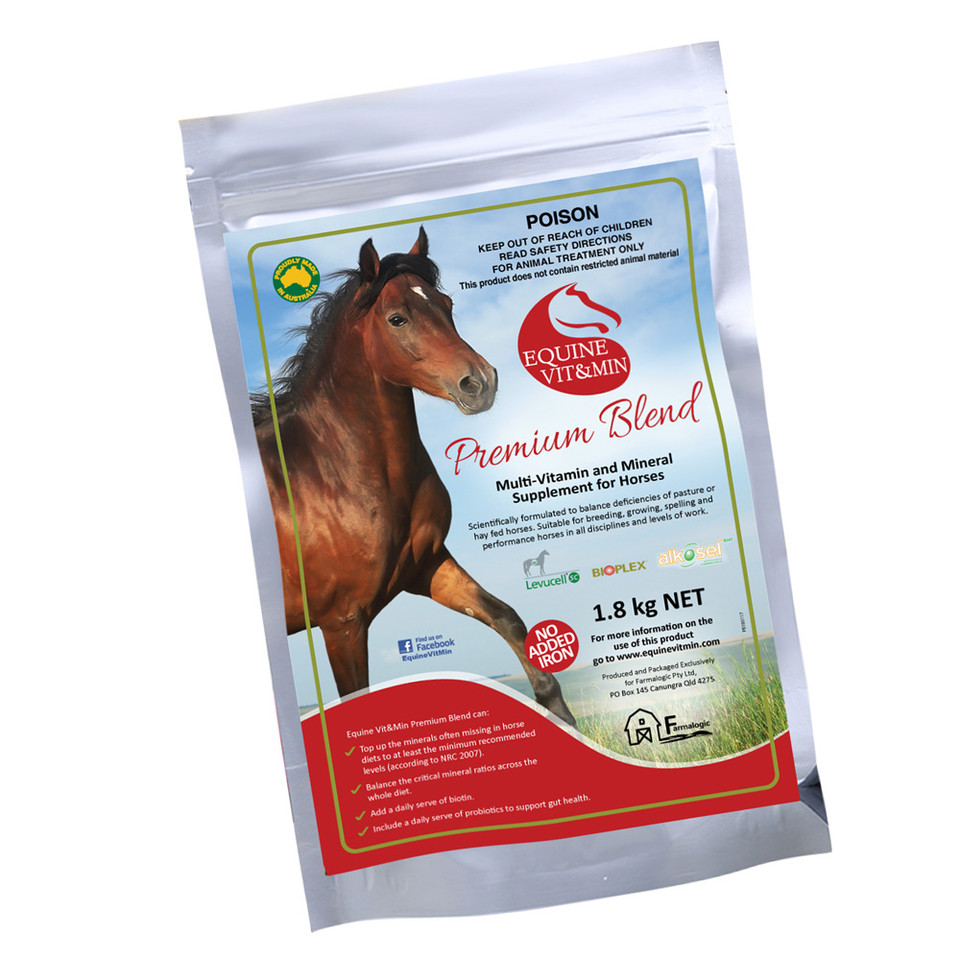
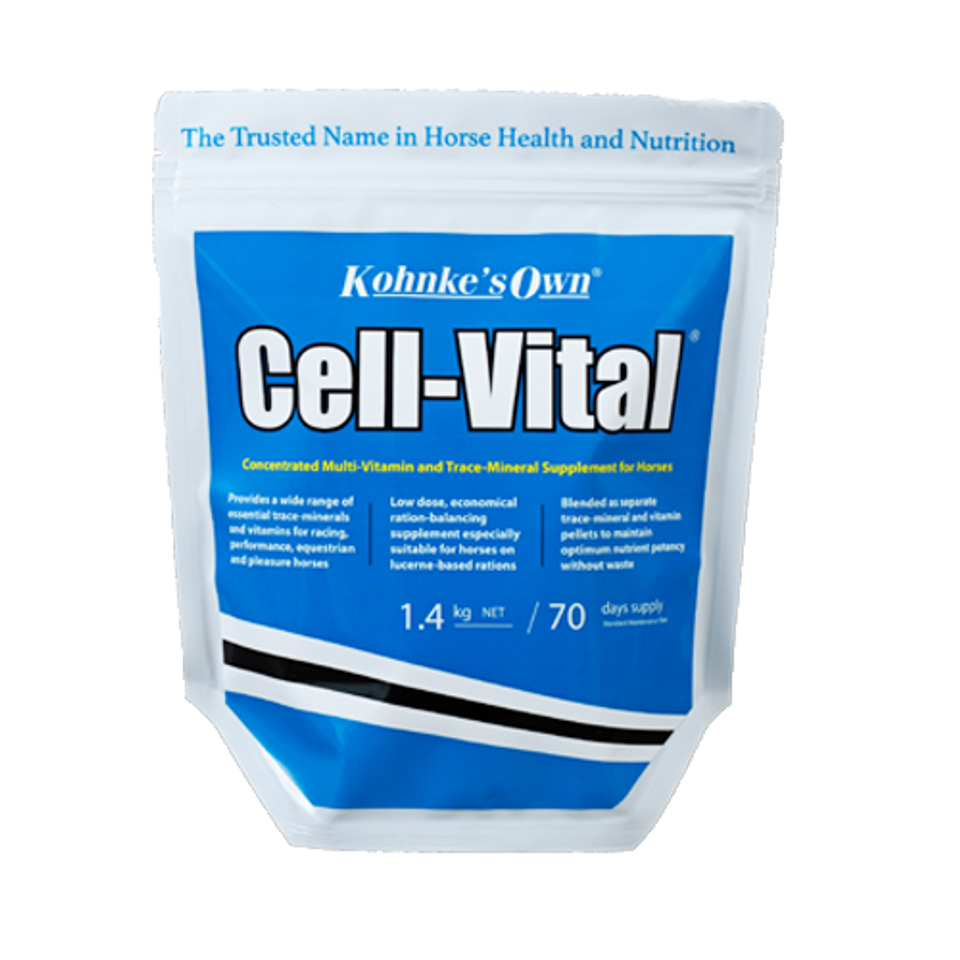
As with any medical condition, a discussion/appointment with your vet is always a good idea, they can help guide you as to what is going on and help with a treatment and management plan going forward. All the above products are all safe to use for competition, but as always you need to adhere to the regulations of your governing body.


